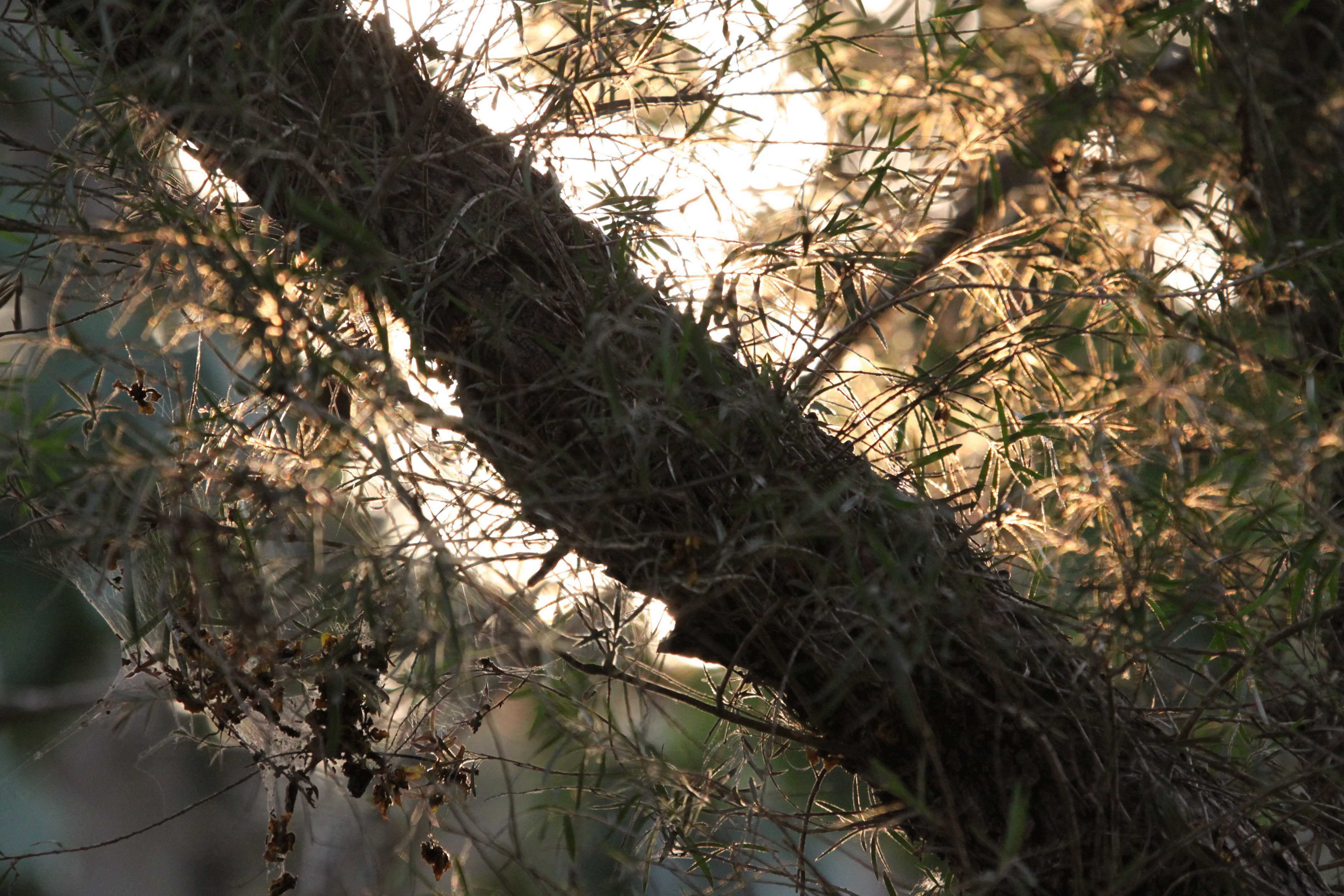When we reached the Mollem forest office, we were offered two options. One was to stay at the Rest House right next to the forest office. And the other one was to stay in a tent, bang in the middle of Mollem National Park. Without batting an eyelid, we chose the more romantic option. But it came with a caveat. The jeep would drop us at the campsite and return to base. And we would have to fend for ourselves without a cook as he was on census duty that had just commenced. This meant that for breakfast, lunch and dinner, we would have to walk a mile to the nearest restaurant in Collem village. The path to the village was through a river; and since there was no bridge on the river, we had to wade through knee-deep water every time we ventured into the village. A tricky proposition, especially in the night, as the torch wasn’t powerful enough to throw light even on your own feet.

Right outside the tent was a forest clearing which was the meeting place of birds of different feathers. In fact we counted 23 different species taking turns to perch on the trees. Watching this live Animal Planet, we discovered that birds follow a hierarchy and different species perch at different heights on the tree. The basic principle being, the bigger you are the higher you get to perch. A nice little perching order.
The lazy evening was spent at the rivulet that passed through the campsite. The water was shallow enough for one to sit on the riverbed and allow the water to give you a gentle hydro massage. As I lay meditating in the flowing water, I realized why a river is like time. No two moments of a river are the same. It comes from the past, touches the present and flows into the future.
The water that was crystal clear suddenly became muddy, and dried leaves and dried twigs flowed past me. Looking upstream, I discovered the cause. A troupe of monkeys were swinging merrily on the overhanging branches and were happily plunging headlong into the rivulet. Accepting their first right to the river, I retreated to my abode.

The 10 km ride to the famous Dudhsagar waterfall took us through pristine evergreen forests that grew darker and denser by the minute. The jeep crossed the river thrice and stopped at the point from where we had to trek. We walked along the river lined with gigantic black rocks brought crashing down by the relentless river over many millennia.
The sight of the largest waterfall in Goa evoked mixed reactions in me. It was a breathtaking free fall of a thousand feet into an evergreen valley. But this magical fall was cruelly sliced into two by a railway line built by the British in a moment of madness.


On our way back, we stopped by to visit the infamous Devil’s Canyon. Here, the water from Dudhsagar river flows through a canyon carved out of treacherous rocks. The water in the canyon is still, almost like a sheet of glass reflecting the blue sky above, inviting. Since there’s no board that warns you of an impending death, you are tempted to take a jump. And as you fall prey to your impulse, you are pulled into an unseen whirlpool that drags you through a labyrinth of underwater passages till you reach a point of no return. Many young, unsuspecting lives have been lost here, every year. And it’s rumoured that every time a life is lost, it’s lost in pairs. And only one old man in the village of Collem can tell you where the bodies will be washed ashore, as only he knows the how the water flows through this maze of underwater tunnels.
After our tryst with the Devil, we returned to the base camp. While crossing the river on our way to Collem for lunch, we were shocked by the legions of picnickers who had descended on the riverbanks from nowhere. They were cooking, eating and drinking. And leaving behind an unsavoury trail of copious consumption. Broken glasses, wrappers, plastic bottles, carry bags, and other assorted litter were being thrown into the ever-forgiving Dudhsagar river. And I silently thanked God for not making a river flow backwards, as all this filth would have flowed back to the breathtaking Dudhsagar waterfalls.
